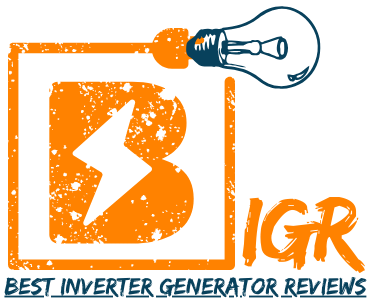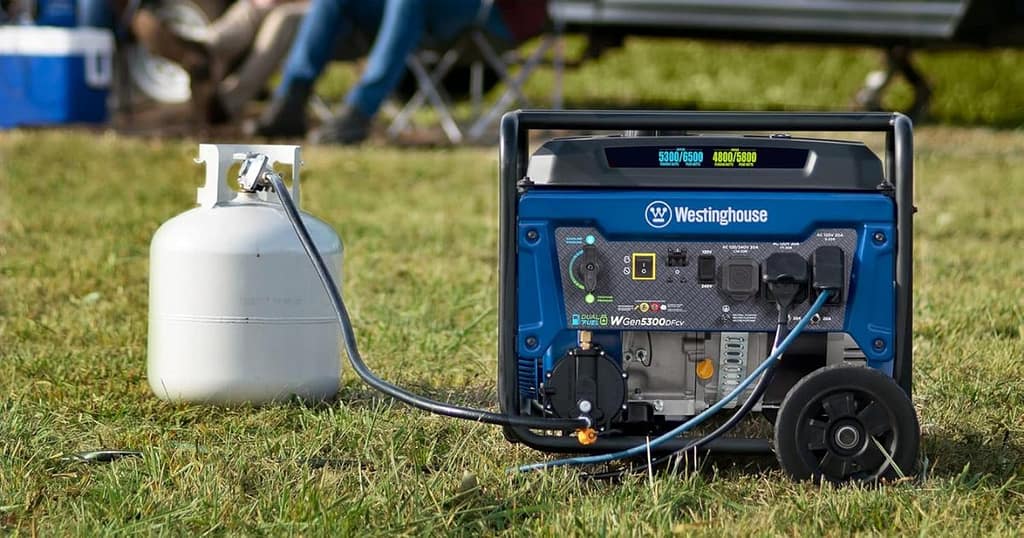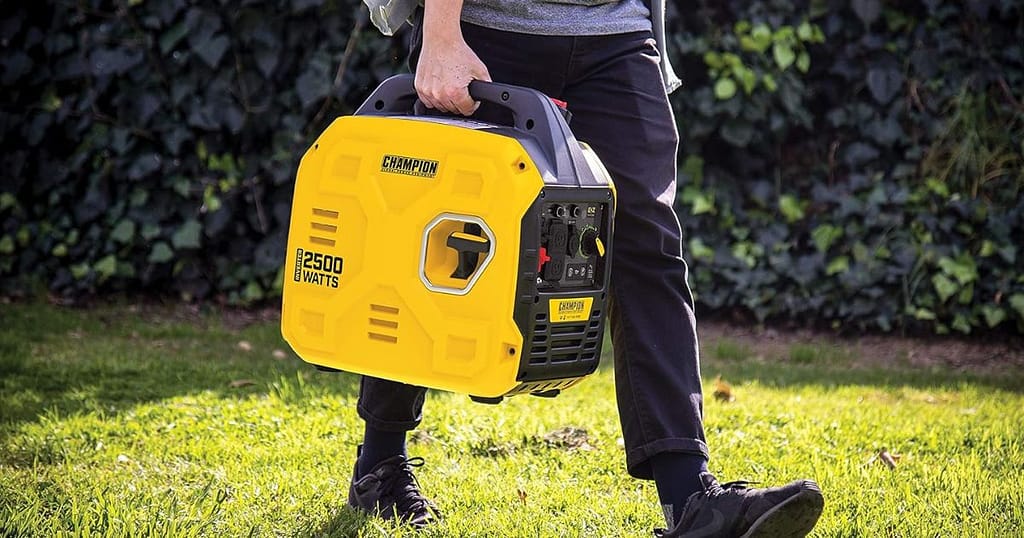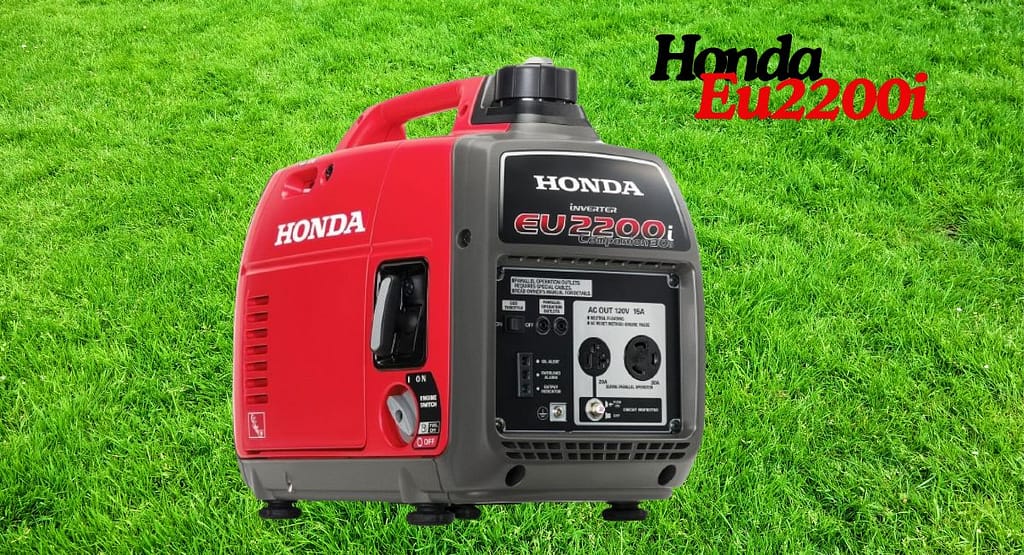The Westinghouse WGen5300DF stands out as a powerful, dual-fuel generator that offers both convenience and performance.
I’m ready to give you the straight facts. No sugarcoating, no spec sheet regurgitation – just hard-won insights from actually living with this generator.
Here’s what you’re getting into with this review:
🔥 The Raw Truth – What this generator actually delivers versus Westinghouse’s claims
💪 Power Performance – How it handles real household loads (spoiler: my fridge, AC, and power tools put it to the test)
⛽ Dual-Fuel Reality Check – Gas vs propane pros/cons from actual use
🔊 The Noise Factor – How loud it really is during 3AM emergency use
🛠️ The Good, The Bad & The Ugly – All the little quirks you won’t find in the manual
Quick note: I bought this unit myself – no freebies or sponsorships here. Just honest opinions.
Reasons to buy
- Dual-Fuel Capability
- Construction of body feels solid
- Extended run time
- Smart Switch Ready
- Built-in safety features
Reasons to avoid
- Not safe for sensetive electronic appliances due to high THD
Design & Build Quality
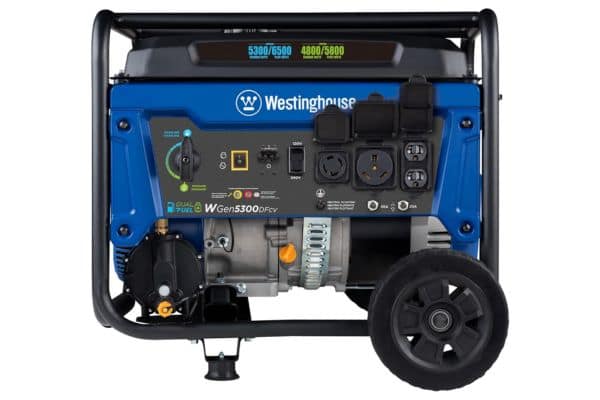
I’ve been using the Westinghouse WGen5300DF for a few months now, and I’ve got to say—it’s been impressive. From the moment you unbox it, the generator has a substantial, well-built feel. The steel frame is heavy-duty, like it’s built to last through storms, job sites, or anything else you throw at it. The design isn’t flashy, but it’s smart and practical. I really appreciate the clear layout of the control panel—everything’s labeled well, and the buttons and outlets feel sturdy, not cheap as I experienced in Westinghouse WGen14500dfc.
Moving it around is easier than I thought, thanks to the large wheels and strong handle. It’s not exactly lightweight, but it’s manageable for one person. What I love most is the dual fuel option. I’ve used both gasoline and propane depending on what I had handy, and it switches over smoothly. It gives that extra flexibility and peace of mind during longer outages.
Overall, it’s a reliable, well-built generator that just works when you need it to. It might not have all the bells and whistles of some higher-end models, but for the price, it’s a tough one to beat.
Engine & Performance
One of the biggest strengths of the WGen5300DF dual fuel portable generator is its engine. It’s powered by a 274cc Westinghouse 4-stroke OHV engine, and I’ve got to say—it feels like a workhorse. It starts up reliably every time, whether I’m using gas or propane, and runs smooth without weird noises or shaking.
What gives it that durability is the cast iron sleeve around the engine cylinder. That might sound technical, but basically, it just means the engine is built to last longer and handle tough use without wearing out quickly. I’ve used it in some rough conditions, and it holds up great.
Two standout safety features immediately impressed me – the engine automatically cuts off when oil gets too low, and it shuts down if dangerous carbon monoxide levels build up. The low oil shutoff gives me peace of mind because I don’t have to worry about damaging the engine if I forget to check the oil. And the CO shutdown? That’s a game-changer. For added safety, the generator will power itself off when carbon monoxide reaches hazardous levels. It’s a smart safety feature, especially if you’re using the generator near a garage or in an emergency setup.
Overall, the engine feels solid, dependable, and well-protected with those built-in safety features. It’s not just strong—it’s smartly built too.
Power Output
When it comes to power, the Westinghouse WGen5300DF portable generator definitely delivers more than enough for most home backup or outdoor needs. Through months of alternating between gas and propane, I’ve discovered some important differences.
On gasoline, it gives you 5300 running watts and 6500 peak watts. That’s plenty to keep major appliances going during an outage—things like a refrigerator, sump pump, lights, and even a small AC unit without breaking a sweat. I’ve used it to power multiple tools on a job site too, and it handles the load like a champ.
On propane, the power dips just a bit (which is totally normal), but it’s still strong—4800 running watts and 5800 peak watts. I usually run it on propane when I want a cleaner burn and less maintenance. It still powers everything I need, just with slightly less push than gasoline. What I love most is how seamlessly I can alternate between different fuel sources when needed.
Run Time & Fuel Capacity
One of the things I really like about the Westinghouse WGen5300DF is how long it runs on a single tank. It comes with a 4.7-gallon fuel tank, which might not sound huge, but it’s super efficient. With the 120/240V selector switch, I’ve been able to get up to 14.5 hours of runtime—that’s practically all day or overnight without needing to refuel.
The built-in fuel gauge is another handy touch. It’s easy to read, so I don’t have to guess how much fuel is left—I just take a quick glance. During outages or when I’m camping, this makes a big difference because I can plan my fuel usage without stress.
I usually run it on gasoline when I know I’ll need it going for the long haul, and I’ve been really impressed by how consistent the power stays even late into the runtime. No sputtering, no power dips—just steady output the whole time.
Dual Fuel Capacity
What makes this Westinghouse generator truly special is how effortlessly it transitions between fuel sources when circumstances demand it. I’ve used both gasoline and propane with it, and switching between the two is super simple—you don’t even have to shut the unit off. That’s a huge deal when you’re in the middle of using it and want to switch fuel types without any hassle.
The fuel selector switch makes it easy. Just turn the dial to the fuel you want to use, and the generator adjusts without missing a beat. I’ve done this mid-use, and it kept running smoothly, no hiccups or restarts needed.
This kind of flexibility is a big win, especially when gas is running low or if I just want to use cleaner-burning propane. It gives me more control and keeps things running longer without stress.
Control Panel
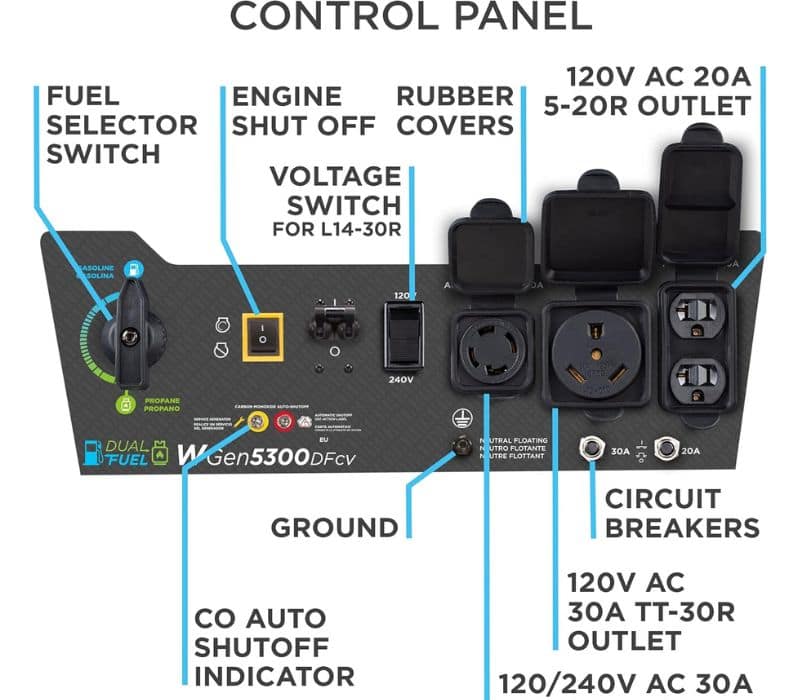
The control panel on the Westinghouse WGen5300DF is one of the things I genuinely like about this generator—it’s laid out in a way that just makes sense, even if you’re not a tech expert.
Starting from the left, there’s a fuel selector switch, which lets you easily toggle between gasoline and propane. It’s clearly marked, and you can switch fuels with a simple twist—super convenient when you’re running low on one.
Right next to it is the engine shut-off switch, which is basically your on/off button. It’s a simple rocker switch that clicks cleanly into place—no guesswork involved.
Then there’s the voltage selector switch—this one’s for switching between 120V and 240V on the L14-30R outlet. This is great when you need more power for larger appliances or when you’re using it for something like a transfer switch during a home power outage.
Below that, you’ll see a CO auto shutoff indicator, which is a safety feature. For your protection, the generator will immediately turn itself off if carbon monoxide reaches dangerous levels. It’s a small thing that brings a lot of peace of mind, especially if you’re running the unit near your home.
Next, there’s the grounding port, which is where you can connect a ground wire for extra safety, especially during storms or for job site use.
Now onto the outlets. There are plenty, and they’re all protected with rubber covers to keep out dust and moisture:
- Two 120V AC 20A 5-20R outlets – these are your standard household-style outlets. Perfect for plugging in everyday stuff like lights, small appliances, or chargers.
- One 120V AC 30A TT-30R outlet – this is especially handy for RV users. With its specialized RV power port, this generator connects straight to your recreational vehicle’s electrical system.
- One 120/240V AC 30A L14-30R outlet – this is ideal for backup power setups using a transfer switch to run essential circuits in your home.
For added protection, you’ll find dedicated circuit breakers beneath the outlet panel – a 30-amp breaker for the larger ports and a separate 20-amp one for standard outlets. They protect the generator and your devices from overloads by cutting the power if something goes wrong.
Noise Level
For a generator this powerful, the WGen5300DF is surprisingly manageable. It weighs around 135.6 lbs, which sounds heavy on paper, but thanks to the compact, hardened steel frame and big wheels, moving it around isn’t a chore. I’ve rolled it across gravel, grass, and pavement without much effort.
Its frame is tough and compact, so it doesn’t take up a ton of space in the garage or truck bed. You can tell it’s made to handle rough use without falling apart.
What really surprised me was how quiet it is for the size. It runs at about 68 dBA, which is more like background noise than a full-on roar. I can carry on a conversation a few feet away without yelling. It’s not silent, but for a generator this size, it’s definitely on the quieter end.
Safety Features
One thing I really appreciate about the WGen5300DF is how much thought Westinghouse put into safety and convenience.
The automatic oil level protection kicked in just in time when my oil got low, proving its worth immediately. I forgot to check the oil during a long use, and instead of damaging the engine, it just shut itself off. That kind of built-in protection is a life-saver, especially if you’re not constantly monitoring it.
Then there’s the automatic voltage regulation. It keeps the power flow steady and protects sensitive electronics from surges or drops. I’ve run TVs, laptops, and other equipment on it without any problems—it delivers clean, stable power.
And of course, there’s overload protection. If you accidentally plug in too much, the circuit breakers trip instead of frying the generator or your devices. I’ve pushed it pretty close to the limit a couple of times, and it handled it like a champ.
Final Verdict
After spending a solid time with the Westinghouse WGen5300DF, I can confidently say it’s one of the most reliable and well-rounded generators I’ve used. It’s tough, easy to operate, and gives you the flexibility of dual fuel without making things complicated. The power output is more than enough for home backup or outdoor projects, and features like automatic shutdowns, voltage regulation, and overload protection give you peace of mind.
I really like the little touches too—like the fuel gauge, the quiet(ish) operation, and how easy it is to move around despite its weight. It feels like a generator that’s built to work hard but not wear you out in the process.
